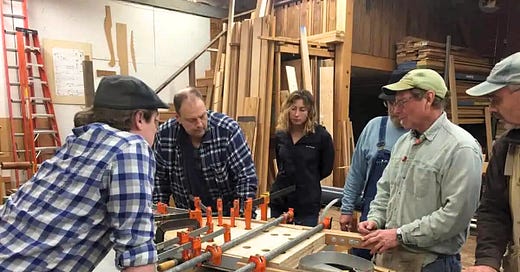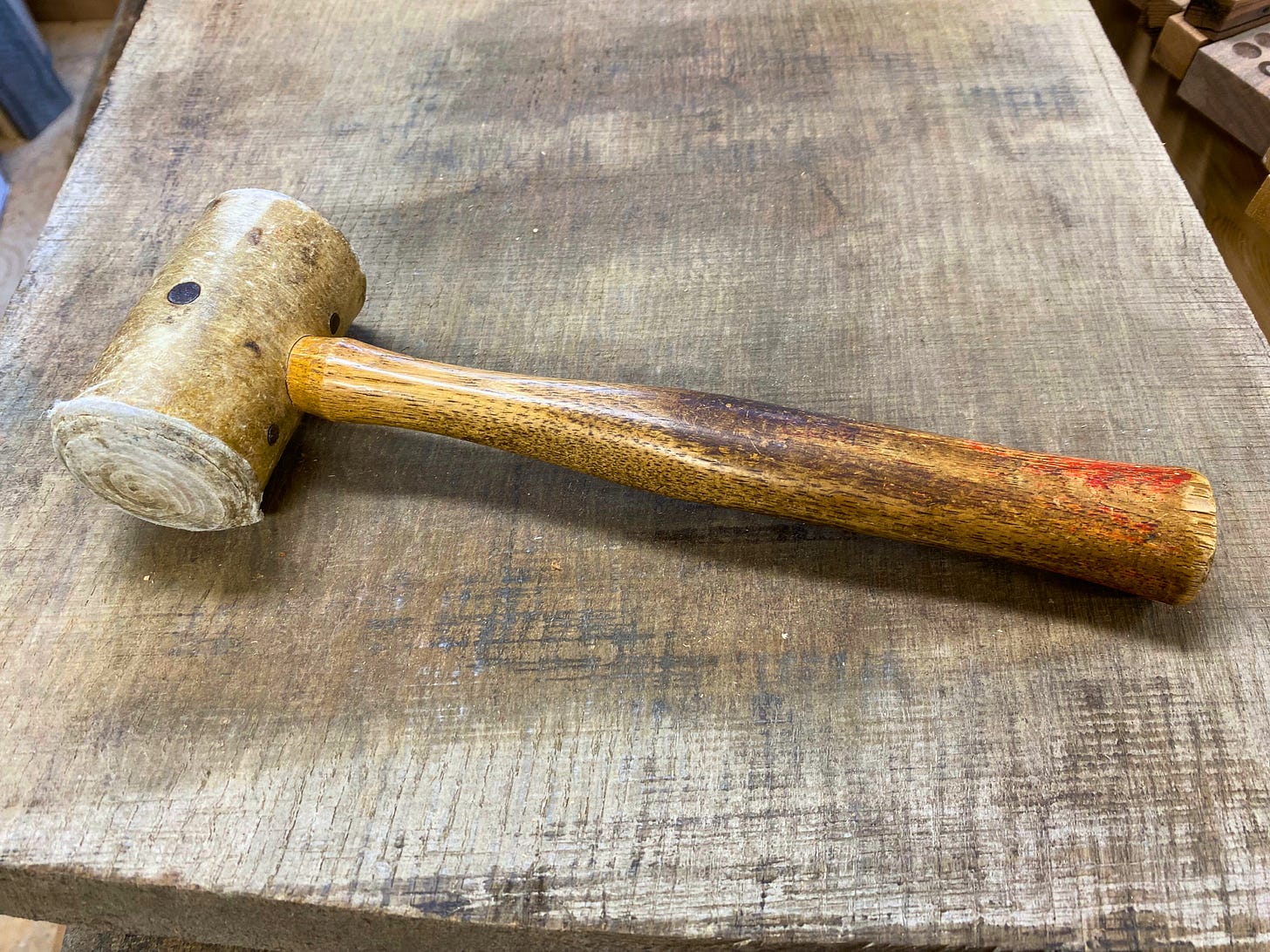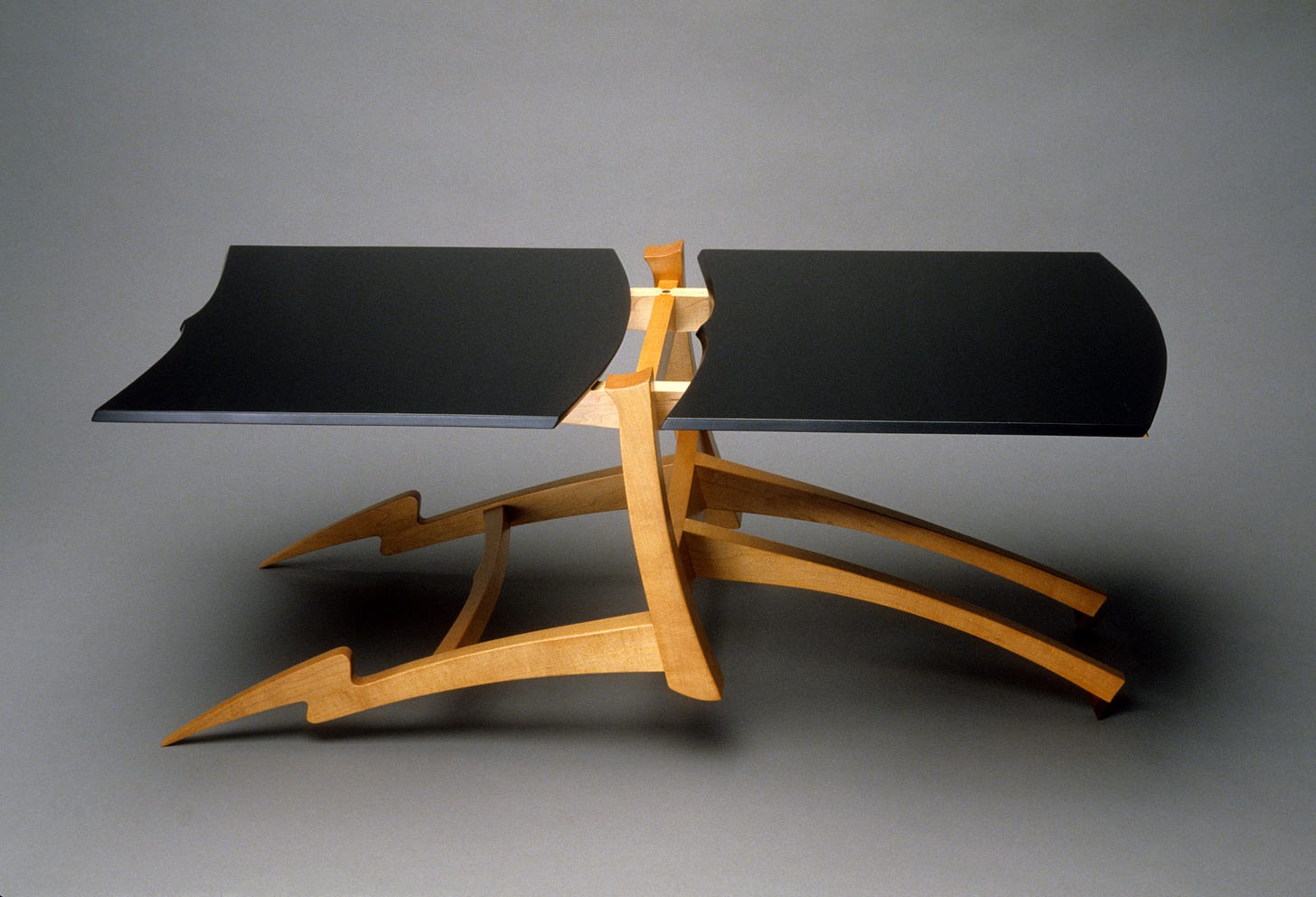My Father’s Mallet
Master woodworker, furniture maker, author, podcaster, and teacher Gary Rogowski offers an "object lesson" from his earliest days of learning the craft.
Dear Friends,
First, I want to thank those of you who have taken the time to comment here, or by email, to tell us which stories you’ve liked, and what you want to see more of. Although we are a very small team here at Craftsmanship, and can’t always respond promptly to every message, I hope you know that each one is read, appreciated, and considered.
We hear your desire for more original, authentic, carefully crafted writing (and audio, and video), and we are trying out some new ways to deliver exactly that. One of those is what we call “shorts”—brief commentaries about some aspect of craft, written by an artisan, or by writers with knowledge in the specific subject.
This week is our first “short ‘Stack” by an artisan—our longtime friend and collaborator, Gary Rogowski, recently featured on our “Secrets of Mastery” podcast. Gary’s essay is an amusing but thoughtful—and highly relatable—reflection on a formative experience during his days as a beginning woodworker. In addition to having spent five decades as a furniture maker, Gary also happens to be a wonderful writer, the author of several books, and something of a philosopher on craftsmanship.
We hope you’ll enjoy reading, “My Father’s Mallet,” written by Gary Rogowski.
We always welcome your thoughts and suggestions, which you can offer in a comment, by tagging us in Substack Notes, or via email. Thank you for reading and sharing our stories, for supporting our work with a paid subscription if you can, and for being such a loyal part of the Craftsmanship community.
Sincerely,
Todd Oppenheimer
Publisher & Editor-in-Chief, Craftsmanship Magazine
My Father’s Mallet
Story and photography by
After graduating college, I finally got up the nerve to quit trying to be what everyone else wanted me to be: priest, professor, or professional. My Lit major brain was tired from working up essays on nothingness. Working with my hands, now this was real stuff…
My father had done some woodworking once, so I went back to that old house of ours, and into the shed behind it, and gathered up some of his tools. I didn’t know yet what they did, but one of them I figured out quickly. It was a mallet, made of a shaped piece of wood for a handle and a rolled-up piece of thick leather for the head. The mallet wasn’t too heavy, but it could make a sharp chisel move grandly through a piece of wood. The handle had a light touch of red and tan paint on it, so it also had some charm. My new mallet.
I began on my own and with some books to teach myself the craft. I learned that this was the long, slow method, and with an ignoramus for a teacher. Fortunately, his student was just as slow as he was. So we worked well together. My learning time was done in a basement, away from the prying eyes of the world.
The wood I used schooled me about grain; the machines I bought educated me about accuracy and danger. The hand tools of my father’s, and those few I could afford, taught me the value of sharpening. But making joints go together precisely showed me only frustration. My hand-sawn tenon would stick, but only halfway into my chopped mortise. Gaps in the shoulders of the joint wounded my pride.
I don’t remember the piece I worked one grim day, but it finally got the better of me, for not agreeing with my demands for it to be perfect. I took that mallet of my father’s and slammed it into my bench as hard as I could. I wanted to break the world. Come over some time and I’ll show you the dent in my bench, which I still have many decades later, and which you can see below (first, where it sits in my shop, and then in its still-dented glory).
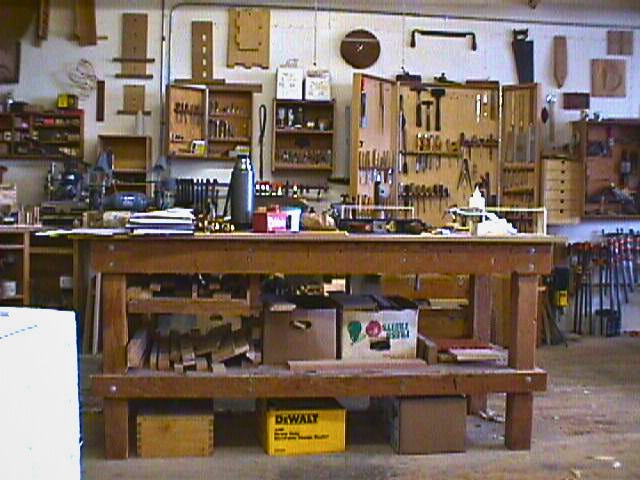
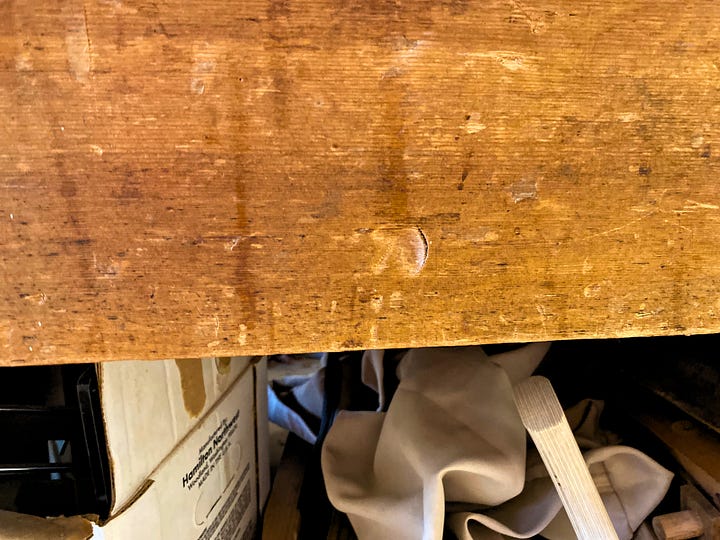
That mallet did not break. It did split, just a tiny bit up near the head, but then it resumed its calm presence as my leather-headed teacher. Kneeling on the floor, I looked at it and immediately lamented my choice to try and break it asunder. The mallet was tougher than I was. I silently apologized to it, and never mistreated it again.
I learned a valuable lesson that day: Wood may be used for throwing across the room with disgust, but never one’s tools. You will need them again tomorrow, as you pursue your sad and sorry quest for mastery with a dunce for a student. Patience dear boy, patience.
ICYMI...
📖 Read: “The Artisan's Paradox,” by Todd Oppenheimer, Publisher and Editor-in-Chief
It's a curious truth: In a world dominated by mass production, the finest handmade goods often cost less than their factory-made counterparts.
🎙️ Listen: “On Choosing Handmade: An Interview with Gary Rogowski,” by
.A master woodworker and furniture maker discusses whether technology helps or hinders us in the creation of beautiful things—and what it takes to become a master in his trade.
Craftsmanship Magazine focuses on master artisans and innovators whose work informs our quest: to create a world built to last. In addition to our Substack offerings, you’ll find a rich archive of stories, podcasts, photo essays, and documentary shorts on our free website—along with community resources like our Artisans’ Directory, our guide to U.S.-based craft & folk schools, and much more.


